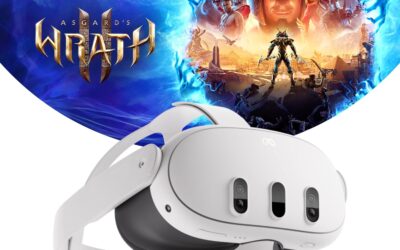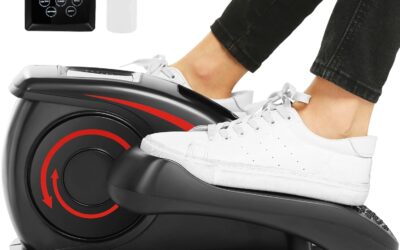The Meta Quest 2, formerly known as the Oculus Quest 2, stands out as the most popular wireless VR headset on the market today and is one of the most affordable options at above USD 250. But what exactly can be done with the Quest 2? What are its best features? Are there any downsides to owning a Quest Meta 2?
These questions and more will be answered. Starting with the last one, while the novelty of the Quest 2 may diminish somewhat over six months, users often find themselves using it about 2 to 3 times a week. This is because Quest 2 offers a uniquely immersive experience and includes a fitness component, making it a great way to take a break and get some exercise.
So, yes, the Quest 2 is considered worth it. Now, what is meant by an immersive experience?

How immersive is the Quest Meta 2?
For those unfamiliar with VR (virtual reality), putting on a VR headset like the Quest 2 means having screens that fill your entire field of view. You can look around in any direction and feel completely immersed in whatever the display shows. For instance, game characters appear in their true-to-life height. In “Vader Immortal,” when Darth Vader approaches, there’s a genuine sense of his imposing presence. Picking up and wielding in VR feels remarkably close to the experience of being a Jedi.
It’s important to note that the Quest records videos in a 1:1 ratio and not in 4k. The recorded footage often looks shaky due to capturing subtle hand and head movements, but with the headset on, the experience is much smoother. So, bear this in mind while viewing any captured footage.

Quest 2 speakers and controllers contribute significantly to the VR experience
The Meta 2 features speakers built into the headset that emit sound just outside of the ears. While they’re not noise-canceling, they perform quite well. They deliver clear and crisp sound with a 3D audio effect, similar to spatial audio with Apple devices or 3D sound with Sony’s PlayStation 5 headsets. This 3D audio capability adds to the immersion by creating a sense of directionality, like something approaching from behind.
The sound quality might not boast heavy bass, but it’s adequate for most experiences. Many users find it satisfactory enough to forgo purchasing separate headphones, although dedicated options are available from companies like Logitech for the Oculus.
The Quest 2 controllers play a crucial role in the virtual world immersion. With multiple triggers, buttons, and joy-cons on each controller, they offer a wide range of interaction possibilities, whether it’s wielding a lightsaber or picking up objects.
Each controller is powered by a single battery, and during the six-month testing period, the battery life has proven to be sufficient. Only recently have notifications started appearing in the Quest prompting to replace the controller batteries. One convenient feature is the ability to check the battery level of the controllers easily while wearing the headset. Either through the settings menu or by simply looking down at the controllers, the Quest generates a virtual representation of the physical controllers with their battery levels displayed on top.

Battery Life
Regarding the battery life of the Quest 2 headset, it’s rated for two to three hours, it tends to hover closer to two hours through the testing of many others. While this might seem relatively short for a gaming device, it’s worth noting that during initial usage, some users may find themselves running out of battery. This could be due to the excitement of experiencing VR technology leading to prolonged sessions.
Initially, users might find themselves using the headset extensively, but over time, usage patterns may shift to shorter bursts of 30 to 45 minutes. This adjustment could be attributed to factors such as the potential for discomfort with extended use or simply wanting to take breaks for rest.
Sweat/Headband
Depending on your usage, such as enabling the 120 Hertz option, the Meta 2 headset can generate some warmth, potentially leading to faster sweating. If you plan to share your headset with others in your household, it’s advisable to install the rubber standard facial interface to prevent sweat from seeping into the foam cushions.
Motion Sickness
Motion sickness can be a concern with the Quest 2, depending on the activities you engage in. If you start feeling nauseous or experience motion sickness while using the headset, it’s essential to remove it immediately. Pushing through discomfort can exacerbate the symptoms and leave you feeling unwell for the rest of the day.
Overall, the Quest 2 headset’s comfort level is reasonably good. I can comfortably wear it for 30 to 45 minutes without any issues, although there’s room for improvement in terms of weight distribution, especially for prolonged gaming sessions.

Glasses spacer installation
To install the glasses spacer into the Quest 2 headset, it’s a straightforward process. Simply remove the black plastic part of the headset, insert the glasses spacer, and then reattach the black plastic headband piece. Meta has made sure that the Quest 2 is easy to set up. The tracking of the controllers and 3D effects is smooth upon initial use. The controllers’ joy-cons are intuitive for setting up WiFi on the headset, and overall, they are very responsive.
Now, onto another common concern: how to prevent collisions with objects like the TV while playing VR. Meta has addressed this with the guardian boundary system. This system allows users to define the play area by identifying the floor and painting the desired space on it. Additionally, Meta recently introduced a feature that lets users mark walls and furniture in the room, although it may cause some lag. The roomscale guardian boundary allows free movement within the designated space, and users can also select a stationary boundary and mark real furniture, like a couch, to be part of the play area. This is useful for tasks like browsing the game store or watching YouTube videos in VR.
The Quest 2 not only saves the guardian boundary but also recalls it when users move to another room where one is saved. Getting bearings in the room is easy with the passthrough mode. Users can activate the Move’s cameras by double-tapping the right part of the headset to see their surroundings.
Quest 2 fitness games
Over the past six months, the Quest 2 has primarily been used for gaming, with Beat Saber being a favorite for its ability to raise the heart rate while providing entertainment. The lightsaber dojo mode in Vader Immortals is also occasionally revisited for its engaging gameplay.
The Quest 2’s fitness features, such as the calorie burn overlay and Oculus Move app, add to its appeal for maintaining an active lifestyle. While there are other fitness games available, the simplicity of Beat Saber’s one-time purchase model for song unlocks has made it a preferred choice.
For social gatherings, the ability to cast the headset’s view to a Chromecast-enabled TV provides entertainment for friends, although the process is more complex for Apple TV or AirPlay-enabled displays.




